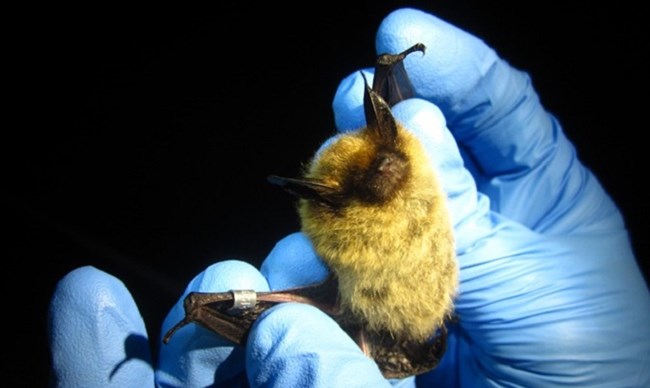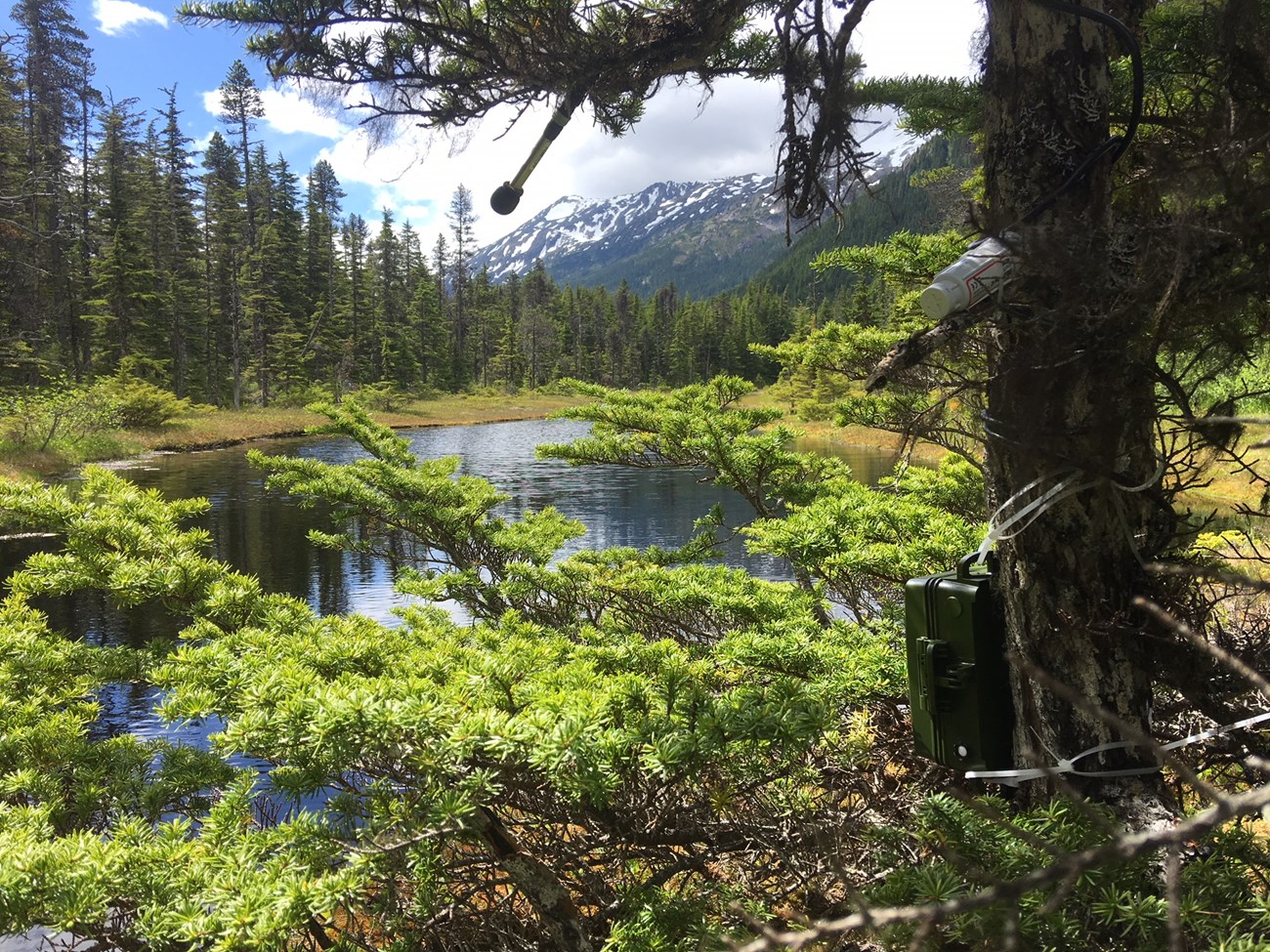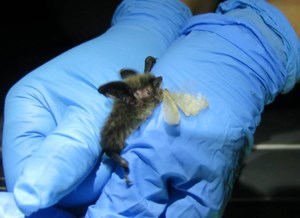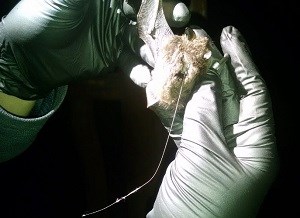
NPS photo Bats are being studied at Klondike Gold Rush National Historical Park to answer some basic questions including:
To answer these questions and more, the park has been studying bats in a few different ways. 
NPS/J. Larsen Acoustic monitoringThis is done using ultrasonic bat detectors. When bats fly around they emit sounds that are not normally heard, or hard to hear, by humans. A bat detector will record bat ecolocation calls and convert them to a sound easily heard. Acoustic monitoring can be done during set time periods (e.g., between dusk and dawn) and does not need a person to be present. Bat detectors can help us find out if bats are in an area, what time of the day (or night) they are present and calling, and may help distinguish different types of bats. The requested video is no longer available.

NPS photo CaptureBats can be captured through mist-net trapping. This happens after an area has been identified, through acoustic monitoring, as heavily used by bats. In mist-netting, a fine, large net is strung up in an area where bats can fly through. As a bat tries to fly through the net it will become entangled. A researcher will retrieve the bat. Capturing a bat allows for better identification visually, DNA samples to be taken, and radio transmitters to be placed on the bats. Remember not to touch a bat! Any researcher who handles bats at Klondike Gold Rush National Historical Park has had training and a full set of rabies shots. Keep yourself and the bats safe. 
NPS photo TelemetryBats that are healthy and in good physical condition may get a radio transmitter when they are captured. These transmitters can then be tracked by researchers without being able to see the bat itself. Monitoring through radio telemetry can give us information on how bats move, where they roost, and whether they hibernate here or migrate in the winter. What bats are found at Klondike Gold Rush National Historical Park?As of 2014, we've identified four different species of bats:
The little brown bat is the most widespread bat in Alaska. It has been found north of Fairbanks as well as throughout southeast Alaska. Most of the bats that have been captured and recorded were little brown bats. If you are visiting Skagway and would like to see bats, head to Pullen Pond. This calm source of water is a good spot for bats that live in town to find insects.
Finding Keen's myotis marks the farthest north this bat has ever been found (as of 2014). This bat prefers to live in Pacific coastal old-growth forests which are not found in the Skagway area. These bats may be using the habitat differently than in other places. This is also the farthest north in Alaska that the long-legged myotis bat has been found, though it has been found at similar latitudes in Canada.
The calls of the silver-haired bat have been recorded several times in the park, but one has not been captured and definitively identified.
Do bats hibernate in the area, or migrate somewhere else?Based on several years of acoustic surveys it looks like bats in this area are active until mid-October. However, researchers are still working to answer the question of where the bats spend the winter. Do bats in this area have white-nose syndrome?So far no white-nose syndrome has been found at Klondike Gold Rush National Historical or in Alaska.
Learn more about bats in Alaska at the Alaska Department of Fish & Game.
|
Last updated: August 6, 2024
